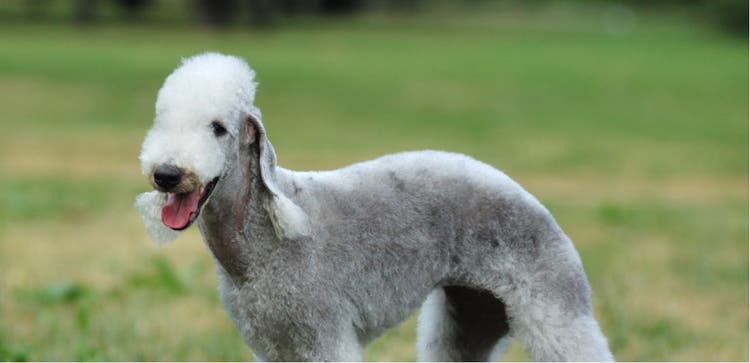
Choosing a Bedlington Terrier
If you have never seen one before, a trimmed Bedlington terrier may look a little strange. With a quick glance, he may be mistaken for a lamb. Long legged, with a characteristic topknot trim, the Bedlington is an excellent house pet as well as an eager hunter.
History and Origin
Prior to 1820, the history of the Bedlington terrier is shrouded in mystery. The breed is thought by many to have been named after the mining shire of Bedlington in the county of Northumberland, England. Originally referred to as the Rothbury, Rodbury or Northumberland fox terrier, the first dog called a Bedlington terrier was born in 1825.
Before becoming a popular pet, the Bedlington eagerly chased and hunted badgers, foxes, rabbits and other vermin. Over time, the characteristics of the breed slowly changed and he become long legged and lean. As his appearance became more elegant, the Bedlington found favor among nobility in the early 1900s. In order to standardize and maintain the breed, the National Bedlington Terrier Club was founded in England in 1877. The breed crossed the Atlantic to become a member of the terrier group of the American Kennel Club.
Appearance and Size
The Bedlington has the overall appearance of elegance and grace, and the most significant characteristic of the breed is the trimmed topknot. The neck is long with a narrow head. The back is arched, giving the appearance of hind legs longer than forelegs. The hair coat is a mixture of hard and soft hair that tends to be curly but not wiry. Although blue is the most popular color, liver is also acceptable.
The adult Bedlington terrier stands 15 to 16 inches at the shoulder and weighs about 18 to 23 pounds.
Personality
Despite being a terrier, the Bedlington is not a troublemaker. The breed tends to be quiet and more tolerant. The Bedlington does well in a variety of situations but still loves to hunt and chase.
Home and Family Relations
Bedlington terriers are loyal and lovable family pets that thrive on human companionship. They tend to be protective of their family and can be good watchdogs, though aggression is not characteristic of the breed. Their hair coat sheds little so they are an excellent choice for people with allergies. Due to their energy level and tolerance, the Bedlington is a good companion for active children.
Training
The Bedlington needs little training to hunt and chase vermin. They easily learn obedience.
Special Concerns
To keep their hair coat free of tangles, regular grooming is necessary. Their distinctive trim may look difficult for the novice to achieve but, with a little practice, many owners are able to keep the hair coat in good condition and appearance with scissors.
Remember that the breed is a terrier and as such needs exercise. Though they do not get into as much mischief as their counterparts, this terrier appreciates activity.
Common Diseases and Disorders
The most significant disorder affecting the Bedlington terrier is a genetic disease “Copper Storage hepatopathy” that results in accumulation of copper in the liver. Breeders are diligently testing and trying to reduce the incidence of this disease in future generations.
Other diseases that have been reported are:
- Entropion is a problem with the eyelid that causes inward rolling. Lashes on the edge of the eyelid irritate the surface of the eyeball and may lead to more serious problems.
- Distichiasis is a condition in which there is growth of extra eyelashes from the glands of the upper or lower eyelid.
- Cataracts cause the lens of the eye to loose transparency and can result in blindness.
- Progressive retinal atrophy (PRA) is a disease that causes nerve cells at the back of the eye to degenerate.
- The condition usually begins in older pets and can lead to blindness.
Life Span
The life span of the Bedlington terrier is 13 to 15 years.
We realize that each dog is unique and may display other characteristics. This profile provides generally accepted breed information only.